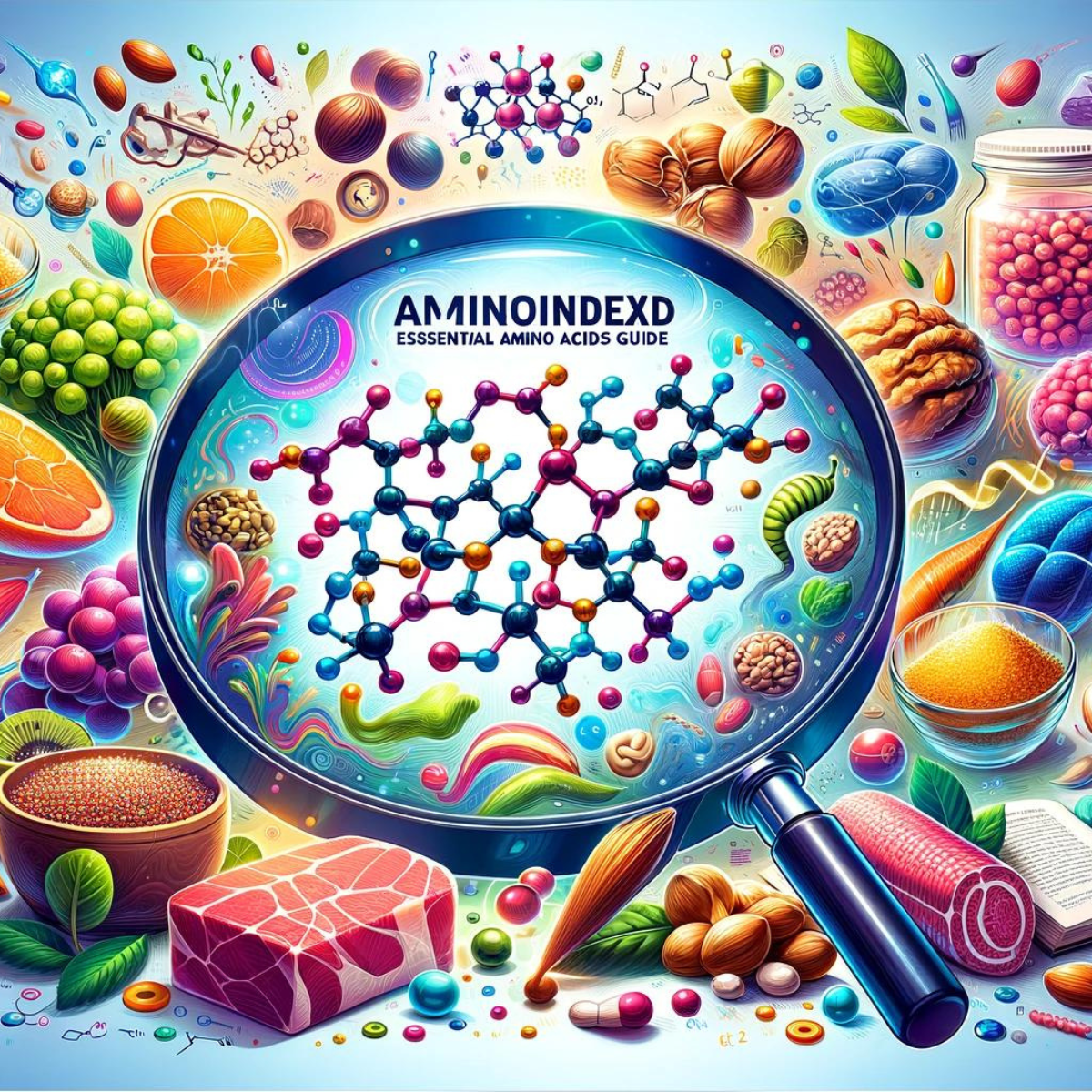สารบัญ
- การแนะนำ
- ทำความเข้าใจการฟื้นฟูกล้ามเนื้อ
- ส่วนประกอบที่สำคัญของการฟื้นฟูกล้ามเนื้อ
- เทคนิคการฟื้นฟูอย่างกระตือรือร้น
- เทคนิคการฟื้นตัวแบบพาสซีฟ
- เทคโนโลยีและการฟื้นฟู
- ข้อผิดพลาดทั่วไปในการฟื้นฟูกล้ามเนื้อ
- รายการตรวจสอบการกู้คืนอย่างรวดเร็ว
- เรื่องราวส่วนตัวและคำรับรอง
- คำถามที่พบบ่อย
- การเปรียบเทียบเทคนิคการฟื้นฟู
- ความคิดเห็นของผู้เชี่ยวชาญเกี่ยวกับการฟื้นฟูกล้ามเนื้อ
- บทสรุป
- การปฏิเสธความรับผิดชอบ
การแนะนำ
นักกีฬาทุกคนเข้าใจดีว่าการออกกำลังกายไม่ได้สิ้นสุดลงเมื่อคุณยกน้ำหนักหรือก้าวลงจากลู่วิ่ง สิ่งที่คุณทำหลังจากออกกำลังกายมีความสำคัญพอๆ กับการฝึกซ้อม การฟื้นฟูกล้ามเนื้อมีความสำคัญสำหรับกิจวัตรการออกกำลังกายทุกประเภท เนื่องจากช่วยป้องกันการบาดเจ็บ ลดอาการปวดเมื่อย และเพิ่มประสิทธิภาพการออกกำลังกาย การฉีกขาดเล็กน้อยเกิดขึ้นภายในเส้นใยกล้ามเนื้อระหว่างการออกกำลังกาย โดยเฉพาะอย่างยิ่งในกิจกรรมที่ต้องใช้ความเข้มข้นสูงหรือไม่คุ้นเคย การฟื้นฟูคือกระบวนการที่ร่างกายซ่อมแซมเส้นใยเหล่านั้น ทำให้แข็งแรงและยืดหยุ่นมากขึ้น คู่มือนี้จะอธิบายองค์ประกอบต่างๆ ของการฟื้นฟูกล้ามเนื้ออย่างมีประสิทธิภาพ ตั้งแต่สารอาหารที่ช่วยสนับสนุนการซ่อมแซมไปจนถึงเทคนิคที่ช่วยให้ฟื้นฟูได้เร็วขึ้น ไม่ว่าคุณจะเป็นนักกีฬาที่มีประสบการณ์หรือเป็นมือใหม่ในการออกกำลังกาย การทำความเข้าใจและนำหลักการเหล่านี้ไปใช้สามารถเป็นแรงบันดาลใจให้คุณปรับการออกกำลังกายให้เหมาะสมที่สุดและทำให้ร่างกายของคุณแข็งแรงและมีสุขภาพดี
ทำความเข้าใจการฟื้นฟูกล้ามเนื้อ
การฟื้นฟูกล้ามเนื้อไม่ได้หมายความถึงการรู้สึกปวดเมื่อยน้อยลงเท่านั้น แต่ยังหมายถึงการปล่อยให้ร่างกายซ่อมแซมและเสริมสร้างความแข็งแรงให้กับตัวเองหลังจากความเครียดจากการออกกำลังกาย กระบวนการนี้มีความสำคัญอย่างยิ่งต่อประสิทธิภาพในระยะสั้นและความก้าวหน้าในระยะยาวของโปรแกรมออกกำลังกายใดๆ
1. อาการปวดเมื่อยกล้ามเนื้อและการเจริญเติบโต
อาการปวดกล้ามเนื้อหลังออกกำลังกาย (DOMS): อาการนี้เกิดขึ้น หลังจากออกกำลังกายหนักๆ หนึ่งหรือสองวัน เป็นอาการตอบสนองตามธรรมชาติของร่างกายที่ส่งสัญญาณว่ากำลังซ่อมแซมเนื้อเยื่อกล้ามเนื้อที่ฉีกขาดจากการออกกำลังกาย อาการเจ็บนี้มักจะรุนแรงขึ้นเมื่อคุณเพิ่งเริ่มออกกำลังกาย หรือเมื่อคุณเพิ่มความเข้มข้นหรือระยะเวลาในการออกกำลังกาย อาการเจ็บนี้บ่งชี้ว่ากล้ามเนื้อของคุณกำลังปรับตัวและแข็งแรงขึ้น แต่ยังเป็นสัญญาณว่าคุณจำเป็นต้องให้เวลาร่างกายได้ฟื้นตัวด้วย
การเพิ่มขนาดของกล้ามเนื้อ: เป็นกระบวนการของการเจริญเติบโตของกล้ามเนื้อ เมื่อคุณออกกำลังกาย คุณจะสร้างรอยฉีกขาดเล็กๆ ในเส้นใยกล้ามเนื้อของคุณ จากนั้นร่างกายของคุณจะซ่อมแซมรอยฉีกขาดเหล่านี้ ซึ่งจะทำให้เส้นใยกล้ามเนื้อแข็งแรงขึ้น กระบวนการซ่อมแซมนี้จะช่วยให้กล้ามเนื้อฟื้นตัวและปรับตัวเพื่อรับมือกับความเครียดที่คล้ายกันในอนาคต การปรับตัวนี้ส่งผลให้กล้ามเนื้อเติบโต ซึ่งเรียกว่า การเพิ่มขนาดของกล้ามเนื้อ
2. บทบาทของการฟื้นฟูในการเพิ่มประสิทธิภาพการทำงาน
- การป้องกันการบาดเจ็บ: การฟื้นฟูอย่างเหมาะสมช่วยป้องกันอาการบาดเจ็บจากการใช้งานกล้ามเนื้อมากเกินไป ซึ่งอาจเกิดขึ้นจากการออกแรงกล้ามเนื้อเดียวกันซ้ำๆ โดยไม่ได้พักผ่อนเพียงพอ
- การเพิ่มประสิทธิภาพการทำงาน: การพักฟื้นยังเป็นสิ่งสำคัญสำหรับการทำงานด้วย การพักฟื้นที่เพียงพอจะช่วยให้การออกกำลังกายครั้งต่อไปง่ายขึ้นและเพิ่มประสิทธิภาพการทำงานโดยรวม
3. ผลกระทบทางจิตใจ: การฟื้นตัวไม่ได้หมายถึงการรักษาร่างกายเพียงอย่างเดียวเท่านั้น แต่ยังรวมถึงการฟื้นฟูจิตใจด้วย การฟื้นตัวทางจิตใจช่วยเพิ่มประสิทธิภาพและแรงจูงใจ รวมถึงการลดความเครียดและการพักผ่อนทางจิตใจ สิ่งสำคัญคือต้องจำไว้ว่าความเหนื่อยล้าทางจิตใจอาจส่งผลเสียต่อประสิทธิภาพของคุณได้เช่นเดียวกับความเหนื่อยล้าทางร่างกาย การใช้เวลาพักผ่อนและชาร์จพลังทางจิตใจจะช่วยให้คุณมีสมาธิและมีแรงจูงใจ ส่งผลให้มีประสิทธิภาพที่ดีขึ้นในการออกกำลังกายหรือการแข่งขันครั้งต่อไป
ปัจจัยที่มีอิทธิพลต่อการฟื้นตัว:
- อายุและระดับความฟิต: บุคคลที่มีอายุน้อยกว่าและผู้ที่มีระดับความฟิตสูงมักจะฟื้นตัวได้เร็วกว่า เนื่องมาจากกระบวนการเผาผลาญที่มีประสิทธิภาพมากขึ้นและมักจะปรับสภาพกล้ามเนื้อพื้นฐานได้ดีกว่า
- ประเภทและความเข้มข้นของการออกกำลังกาย: การออกกำลังกายที่มีความเข้มข้นสูง เช่น HIIT หรือการยกน้ำหนัก และกิจวัตรการออกกำลังกายแบบใหม่ เช่น การฝึกมาราธอนหรือคลาส CrossFit ต้องมีการฟื้นฟูร่างกายมากกว่าเนื่องจากความเครียดที่เพิ่มมากขึ้นที่ส่งผลต่อกล้ามเนื้อ
- โภชนาการและการให้ความชุ่มชื้น: สิ่งที่คุณบริโภคก่อน ระหว่าง และหลังการออกกำลังกายส่งผลต่ออัตราการฟื้นตัวของคุณอย่างมาก
- การนอนหลับและการพักผ่อน: การนอนหลับที่มีคุณภาพถือเป็นสิ่งสำคัญที่สุดในการฟื้นฟู เนื่องจากกระบวนการซ่อมแซมส่วนใหญ่เกิดขึ้นในช่วงการนอนหลับลึก
การเข้าใจถึงแง่มุมเหล่านี้ของการฟื้นฟูกล้ามเนื้อไม่เพียงแต่ช่วยให้คุณมีความรู้เท่านั้น แต่ยังช่วยให้คุณปรับแต่งกิจวัตรหลังการออกกำลังกายให้เหมาะกับความต้องการของร่างกายได้อีกด้วย ความเข้าใจนี้จะช่วยเพิ่มประสิทธิภาพในการฟื้นฟูและประสิทธิภาพการเล่นกีฬาโดยรวม ทำให้คุณสามารถควบคุมเส้นทางการออกกำลังกายของคุณได้อย่างมั่นคง
ส่วนประกอบที่สำคัญของการฟื้นฟูกล้ามเนื้อ
การฟื้นตัวหลังการออกกำลังกายเกี่ยวข้องกับองค์ประกอบสำคัญหลายประการ ซึ่งแต่ละองค์ประกอบมีความสำคัญต่อการช่วยซ่อมแซมและเสริมสร้างความแข็งแรงของกล้ามเนื้อ การรวมองค์ประกอบเหล่านี้เข้าไว้ในกิจวัตรหลังการออกกำลังกายสามารถปรับปรุงการฟื้นตัวและผลลัพธ์ด้านฟิตเนสโดยรวมของคุณได้อย่างมาก
1. โภชนาการ
โภชนาการมีบทบาทสำคัญในการฟื้นฟูกล้ามเนื้อ ตัวอย่างเช่น โปรตีนมีความจำเป็นต่อการซ่อมแซมกล้ามเนื้อ โดยโปรตีนจะสลายตัวเป็นกรดอะมิโนที่จำเป็นต่อการซ่อมแซมและสร้างเนื้อเยื่อของกล้ามเนื้อ เลือกแหล่งอาหารที่มีคุณภาพสูง เช่น โปรตีนเวย์ ไข่ หรือเนื้อสัตว์ไม่ติดมัน คาร์โบไฮเดรตช่วยเติมไกลโคเจนในกล้ามเนื้อที่ใช้ระหว่างการออกกำลังกายและช่วยในการดูดซึมกรดอะมิโนเข้าสู่กล้ามเนื้อ ทำให้การฟื้นตัวเร็วขึ้น ไขมันมีความจำเป็นต่อสมดุลของฮอร์โมนและการซ่อมแซมเซลล์ แม้ว่าไขมันจะไม่ค่อยได้รับการเน้นย้ำมากนัก แต่ไขมันเหล่านี้ก็มีความสำคัญต่อการสร้างสมดุลของฮอร์โมนและการซ่อมแซมเซลล์ เน้นที่ไขมันที่มีประโยชน์ต่อสุขภาพจากแหล่งอาหาร เช่น อะโวคาโด ถั่ว และเมล็ดพืช
อาหารเสริม
อาหารเสริมบางชนิด เช่น กรดอะมิโนโซ่กิ่ง (BCAA) ครีเอทีนเพื่อเติมพลังงาน และกรดไขมันโอเมก้า 3 เพื่อลดการอักเสบ สามารถเสริมการฟื้นตัวได้
2. การเติมน้ำ
การขาดน้ำอาจทำให้การฟื้นตัวและประสิทธิภาพของกล้ามเนื้อลดลงอย่างมาก สิ่งสำคัญคือการทดแทนของเหลวที่สูญเสียไปด้วยการดื่มน้ำให้มากก่อน ระหว่าง และหลังการออกกำลังกาย เครื่องดื่มที่มีอิเล็กโทรไลต์สูงอาจเป็นประโยชน์หลังจากออกกำลังกายอย่างหนักหรือเป็นเวลานาน
3. การนอนหลับ
การนอนหลับไม่เพียงแต่เป็นความหรูหราเท่านั้น แต่ยังเป็นหนึ่งในปัจจัยที่สำคัญที่สุดในการฟื้นฟูร่างกายแต่กลับถูกมองข้ามบ่อยครั้ง ในระหว่างการนอนหลับ ร่างกายจะผลิตฮอร์โมนการเจริญเติบโต ซึ่งมีบทบาทสำคัญต่อการเจริญเติบโตของเนื้อเยื่อและการซ่อมแซมกล้ามเนื้อ ผู้ใหญ่ควรนอนหลับอย่างมีคุณภาพ 7-9 ชั่วโมงต่อคืนเพื่อให้ร่างกายฟื้นตัวได้ดีที่สุด
4. การฟื้นฟูอย่างแข็งขัน
การออกกำลังกายแบบแอคทีฟรีคัฟเวอร์เป็นการออกกำลังกายแบบเบาๆ ในช่วงพักฟื้น ซึ่งอาจรวมถึงกิจกรรมต่างๆ เช่น การเดิน โยคะ หรือปั่นจักรยานเบาๆ เพื่อเพิ่มการไหลเวียนของเลือดไปยังกล้ามเนื้อโดยไม่ทำให้กล้ามเนื้อตึงเกินไป ซึ่งจะช่วยลดอาการปวดเมื่อยและเร่งกระบวนการรักษา
5. เทคนิคการฟื้นฟูแบบพาสซีฟ
- การบำบัดด้วยความเย็น: เทคนิคต่างๆ เช่น การแช่น้ำแข็งหรือการบำบัดด้วยความเย็น สามารถช่วยลดการอักเสบและอาการปวดเมื่อยกล้ามเนื้อได้
- การบำบัดด้วยความร้อน: การประคบความร้อนสามารถช่วยเพิ่มการไหลเวียนของโลหิตและผ่อนคลายกล้ามเนื้อได้ เทคนิคต่างๆ เช่น การใช้แผ่นความร้อน การอาบน้ำอุ่น หรือการซาวน่า
- เสื้อผ้ารัดรูป: การสวมถุงเท้ารัดรูป กางเกงเลกกิ้ง หรือปลอกแขนสามารถส่งเสริมการไหลเวียนของเลือดไปยังหลอดเลือดดำและเพิ่มการไหลเวียนของเลือด ซึ่งจะช่วยขจัดกรดแลคติกออกจากกล้ามเนื้อ
- การนวดและการกลิ้งโฟม: เทคนิคเหล่านี้สามารถช่วยคลายปมในกล้ามเนื้อและเพิ่มการไหลเวียนโลหิต ช่วยให้ฟื้นตัวได้เร็วขึ้นและอาการปวดเมื่อยกล้ามเนื้อลดลง
ส่วนประกอบแต่ละอย่างเหล่านี้มีบทบาทสำคัญในกระบวนการฟื้นฟูกล้ามเนื้อ ช่วยให้คุณกลับมาออกกำลังกายได้เร็วขึ้นและมีพลังงานมากขึ้น ส่งผลให้มีประสิทธิภาพที่ดีขึ้นและบาดเจ็บน้อยลง
เทคนิคการฟื้นฟูอย่างกระตือรือร้น
การฟื้นตัวแบบแอคทีฟเกี่ยวข้องกับการทำกิจกรรมที่มีความเข้มข้นต่ำถึงปานกลางหลังจากออกกำลังกายอย่างหนัก วิธีนี้จะช่วยให้การฟื้นตัวเป็นไปได้ง่ายขึ้นโดยเพิ่มการไหลเวียนโลหิตของกล้ามเนื้อโดยไม่เพิ่มความเครียดเพิ่มเติม ต่อไปนี้เป็นเทคนิคการฟื้นตัวแบบแอคทีฟที่สำคัญบางประการที่สามารถนำไปผสานเข้ากับการออกกำลังกายทุกประเภท:
1. การออกกำลังกายแบบเบาๆ
- การออกกำลังกายแบบคาร์ดิโอเบาๆ: การจ็อกกิ้งเบาๆ การเดินเร็วๆ หรือการปั่นจักรยานแบบชิลล์ๆ อาจช่วยเพิ่มการไหลเวียนโลหิต ส่งออกซิเจนและสารอาหารไปยังกล้ามเนื้อได้มากขึ้น และช่วยให้ฟื้นตัวได้เร็วขึ้น
- การว่ายน้ำ: การลอยตัวของน้ำช่วยลดความเครียดของกล้ามเนื้อและข้อต่อ พร้อมทั้งยังเป็นการออกกำลังกายแบบเบา ๆ ทั่วร่างกาย ซึ่งสามารถช่วยบรรเทาอาการปวดเมื่อยของกล้ามเนื้อได้
2. การยืดกล้ามเนื้อ
- การยืดกล้ามเนื้อแบบไดนามิก: เกี่ยวข้องกับการเคลื่อนไหวส่วนต่างๆ ของร่างกายและเพิ่มการเอื้อมถึง ความเร็วในการเคลื่อนไหว หรือทั้งสองอย่าง การยืดกล้ามเนื้อแบบไดนามิกก่อนออกกำลังกายจะช่วยวอร์มอัพกล้ามเนื้อ ในขณะที่หลังออกกำลังกาย จะช่วยให้กล้ามเนื้อกลับมามีความยาวปกติและป้องกันอาการตึง
- การยืดกล้ามเนื้อแบบคงที่: การยืดกล้ามเนื้อแบบคงที่หลังการออกกำลังกายสามารถช่วยคลายความร้อนในร่างกายและเพิ่มความยืดหยุ่นของกล้ามเนื้อได้ โดยจะยืดกล้ามเนื้อเพื่อลดความรู้สึกไม่สบายเล็กน้อยและค้างท่าไว้หลายวินาที
3. งานด้านการเคลื่อนที่
- โฟมโรลเลอร์: การผ่อนคลายกล้ามเนื้อด้วยโฟมโรลเลอร์สามารถช่วยคลายความตึงของกล้ามเนื้อ อาการปวดเมื่อย และการอักเสบได้ นอกจากนี้ยังช่วยเพิ่มการเคลื่อนไหวของข้อต่อ ทำให้เป็นเครื่องมือฟื้นฟูร่างกายหลังการออกกำลังกายที่ยอดเยี่ยม
- โยคะ: โยคะเป็นการผสมผสานการหายใจเข้าลึกๆ การยืดเหยียด และการออกกำลังกายเพื่อความสมดุล ซึ่งช่วยเพิ่มความคล่องตัวโดยรวม ช่วยให้ผ่อนคลาย และฟื้นฟูกล้ามเนื้อ ท่าต่างๆ สามารถกำหนดเป้าหมายไปที่บริเวณที่ตึงเครียดหลังการออกกำลังกาย ช่วยให้ผ่อนคลายและฟื้นตัวได้
4. การฝึกความต้านทานแบบความเข้มข้นต่ำ
- การฝึกความต้านทานแบบเบาสามารถทำให้กล้ามเนื้อทำงานได้อย่างคล่องตัวในวันที่ไม่ต้องยกของหนัก โดยไม่ต้องออกแรงมากจนเกินไป ซึ่งอาจรวมถึงการยกน้ำหนักเบา แถบต้านทาน หรือการออกกำลังกายโดยใช้เพียงน้ำหนักตัว โดยเน้นที่เทคนิคและการเคลื่อนไหวที่ควบคุมได้
การผสมผสานเทคนิคการฟื้นฟูแบบแอคทีฟเหล่านี้เข้ากับกิจวัตรประจำวันของคุณสามารถเร่งการฟื้นตัวของกล้ามเนื้อและปรับปรุงสุขภาพร่างกายโดยรวมได้ด้วยการรักษาระดับกิจกรรมที่สม่ำเสมอ การเคลื่อนไหวร่างกายเบาๆ จะช่วยให้ร่างกายของคุณฟื้นตัวได้อย่างมีประสิทธิภาพมากขึ้นและเตรียมพร้อมสำหรับการออกกำลังกายครั้งต่อไป
เทคนิคการฟื้นตัวแบบพาสซีฟ
การฟื้นฟูแบบพาสซีฟหมายถึงวิธีการที่ไม่ต้องมีกิจกรรมทางกาย แต่มีความสำคัญต่อการซ่อมแซมกล้ามเนื้อและการผ่อนคลายร่างกายโดยรวม เทคนิคเหล่านี้สามารถช่วยลดอาการปวดเมื่อยกล้ามเนื้อและส่งเสริมกระบวนการฟื้นฟูได้อย่างมีประสิทธิภาพ ต่อไปนี้คือวิธีการฟื้นฟูแบบพาสซีฟหลายวิธีที่สามารถนำมาใช้ในการออกกำลังกายได้:
1. การบำบัดด้วยความเย็น
- การแช่ตัวในน้ำ เย็น หลังออกกำลังกายหนักๆ อาจช่วยลดอาการอักเสบและปวดเมื่อยของกล้ามเนื้อได้ การแช่ตัวในน้ำเย็นจะช่วยทำให้หลอดเลือดหดตัวและลดกิจกรรมการเผาผลาญ ซึ่งจะช่วยลดอาการบวมและการสลายตัวของเนื้อเยื่อ
- การบำบัดด้วยความเย็น: วิธีการที่ทันสมัยกว่าคือการให้ร่างกายสัมผัสกับอากาศเย็นจัดเป็นเวลาหลายนาที ซึ่งสามารถช่วยบรรเทาอาการปวดกล้ามเนื้อ เร่งการฟื้นตัว และปรับปรุงสุขภาพโดยรวมให้ดีขึ้น
2. การบำบัดด้วยความร้อน
- ซาวน่า: การใช้ซาวน่าสามารถช่วยเพิ่มการไหลเวียนของเลือด ซึ่งช่วยในกระบวนการซ่อมแซมและฟื้นฟูตามธรรมชาติ ความร้อนจะช่วยผ่อนคลายกล้ามเนื้อ บรรเทาอาการปวด และปรับปรุงการเคลื่อนไหวของข้อต่อ
- การแช่ตัวในอ่างน้ำ ร้อน ผสมเกลือเอปซัมอาจช่วยลดอาการปวดเมื่อยและความตึงเครียดของกล้ามเนื้อได้ แมกนีเซียมในเกลือเอปซัมสามารถดูดซึมผ่านผิวหนังได้และช่วยลดการอักเสบ
3. การบำบัดด้วยการนวด
- การนวดเป็นประจำสามารถช่วยให้ฟื้นฟูร่างกายได้ดีขึ้นโดยกระตุ้นการไหลเวียนโลหิตและช่วยคลายปมกล้ามเนื้อ ส่งผลให้ความตึงและความเจ็บปวดของกล้ามเนื้อลดลง และเพิ่มระยะการเคลื่อนไหวและความยืดหยุ่น
4. การบำบัดด้วยการกดทับ
- เสื้อผ้ารัดรูป: การสวมถุงเท้ารัดรูป กางเกงเลกกิ้ง หรือปลอกแขนสามารถส่งเสริมการไหลเวียนของเลือดไปยังหลอดเลือดดำและเพิ่มการไหลเวียนของเลือด ซึ่งจะช่วยขจัดกรดแลคติกออกจากกล้ามเนื้อ
- อุปกรณ์บีบอัด: อุปกรณ์ต่างๆ เช่น รองเท้าบีบอัดลม จะให้การบีบอัดแบบไดนามิก เลียนแบบการปั๊มกล้ามเนื้อของขา ช่วยเพิ่มการไหลเวียนโลหิต และเร่งการฟื้นตัว
5. การพักผ่อนที่เพียงพอ
- การพักผ่อนให้เพียงพอและหลีกเลี่ยงการฝึกซ้อมมากเกินไปถือเป็นสิ่งสำคัญ วันพักผ่อนช่วยให้กล้ามเนื้อได้รับการซ่อมแซมและเสริมสร้างความแข็งแรง นอกจากนี้ การพักผ่อนอย่างเพียงพอยังช่วยรักษาสุขภาพจิตซึ่งมีความสำคัญพอๆ กับการฟื้นฟูร่างกาย
6. การนอนหลับ
- การนอนหลับที่มีคุณภาพถือเป็นองค์ประกอบที่สำคัญที่สุดในการฟื้นฟูร่างกายแบบพาสซีฟ ในระหว่างการนอนหลับ ร่างกายจะผลิตฮอร์โมนการเจริญเติบโตซึ่งจำเป็นต่อการซ่อมแซมและการเติบโตของกล้ามเนื้อ การนอนหลับพักผ่อนให้เพียงพอและลึกเพียงพอสามารถช่วยเพิ่มอัตราการฟื้นตัวได้อย่างมาก
การนำเทคนิคการฟื้นฟูแบบพาสซีฟเหล่านี้มาใช้ในกิจวัตรหลังการออกกำลังกายสามารถเพิ่มประสิทธิภาพการฟื้นตัวของกล้ามเนื้อและประสิทธิภาพการเล่นกีฬาได้อย่างมาก นอกจากนี้ยังช่วยลดระยะเวลาการหยุดพักเนื่องจากความเจ็บปวดและการบาดเจ็บ และเตรียมร่างกายให้พร้อมสำหรับการออกแรงครั้งต่อไป
เทคโนโลยีและการฟื้นฟู
เทคโนโลยีมีบทบาทสำคัญในการเสริมสร้างการฟื้นตัวของกล้ามเนื้อและเพิ่มประสิทธิภาพการทำงานในแวดวงฟิตเนสในปัจจุบัน เทคโนโลยีนำเสนอวิธีการใหม่ๆ ในการตรวจสอบ วิเคราะห์ และเร่งกระบวนการฟื้นตัว ตั้งแต่เครื่องมือสวมใส่ไปจนถึงเครื่องมือฟื้นฟูขั้นสูง ต่อไปนี้คือเทคโนโลยีชั้นนำบางส่วนที่กำลังเปลี่ยนแปลงวิธีการฟื้นตัวของนักกีฬา:
1. เทคโนโลยีที่สามารถสวมใส่ได้
- เครื่องติดตามการออกกำลังกายและสมาร์ทวอทช์: อุปกรณ์ต่างๆ เช่น Fitbits, Apple Watch และอุปกรณ์ Garmin สามารถติดตามอัตราการเต้นของหัวใจ รูปแบบการนอนหลับ และระดับกิจกรรม โดยให้ข้อมูลเชิงลึกว่าร่างกายของคุณฟื้นตัวได้ดีเพียงใด
- เครื่องตรวจวัดความแปรปรวนของอัตราการเต้นของหัวใจ (HRV): การตรวจติดตาม HRV เป็นเครื่องมือที่ยอดเยี่ยมในการประเมินความพร้อมของร่างกายในการทำกิจกรรมต่างๆ ความแปรปรวนที่สูงขึ้นบ่งชี้ถึงการฟื้นตัวและความพร้อมในการฝึกซ้อมที่ดีขึ้น
2. แอปการกู้คืน
- แอปต่างๆ มากมายได้รับการออกแบบมาเพื่อแนะนำผู้ใช้ในการฟื้นฟูร่างกาย เช่น การยืดเส้นยืดสาย การเจริญสติ และการทำสมาธิ ซึ่งสามารถช่วยลดความเครียดและปรับปรุงคุณภาพการพักผ่อนและการฟื้นฟูร่างกายได้
- แอปยังสามารถติดตามเมตริกการฟื้นฟูและเสนอคำแนะนำที่ปรับแต่งตามข้อมูลจากการออกกำลังกายและกิจกรรมประจำวันของคุณ
3. เครื่องกระตุ้นกล้ามเนื้อไฟฟ้า (EMS)
- อุปกรณ์ EMS ใช้กระแสไฟฟ้าในการทำให้กล้ามเนื้อหดตัว ซึ่งเลียนแบบผลของการออกกำลังกายโดยไม่ต้องออกแรงทางกายภาพ ซึ่งสามารถช่วยรักษาโทนของกล้ามเนื้อและเร่งการฟื้นตัวโดยการปรับปรุงการไหลเวียนของเลือด
4. อุปกรณ์อัดอากาศ
- อุปกรณ์เหล่านี้จะห่อหุ้มแขนขาและเพิ่มการไหลเวียนของโลหิตผ่านรอบความดันที่ควบคุมได้ อุปกรณ์เหล่านี้มีประสิทธิภาพโดยเฉพาะในการลดอาการบวมและปวดของแขนขาหลังการออกกำลังกาย
5. อินฟราเรดและการบำบัดด้วยแสง
- ซาวน่าอินฟราเรด: ส่งความร้อนที่ลึกกว่าซึ่งสามารถช่วยบรรเทาความตึงของกล้ามเนื้อและเพิ่มการไหลเวียนโลหิต
- การบำบัดด้วยแสง LED: อุปกรณ์ที่ใช้แสงที่มีความยาวคลื่นเฉพาะสามารถส่งเสริมการซ่อมแซมเซลล์และบรรเทาอาการอักเสบ ช่วยให้กล้ามเนื้อฟื้นตัวได้เร็วขึ้น
6. ความเป็นจริงเสมือน (VR)
- เทคโนโลยี VR กำลังถูกสำรวจถึงศักยภาพในการฟื้นฟู โดยเฉพาะในการจัดการกับความเจ็บปวดและปรับปรุงการฟื้นฟูจิตใจ การมีส่วนร่วมในสภาพแวดล้อม VR ที่ทำให้สงบสามารถลดการรับรู้ถึงความเจ็บปวดได้อย่างมากและส่งเสริมการผ่อนคลาย
7. รองเท้าฟื้นฟู
- รองเท้าที่พัฒนาด้วยเทคโนโลยีขั้นสูงที่ออกแบบมาเพื่อการฟื้นฟูร่างกายสามารถลดความเครียดของเท้าและรองรับอุ้งเท้าได้อย่างจำเป็น ช่วยให้รู้สึกสบายมากขึ้นและลดระยะเวลาการฟื้นตัวระหว่างการออกกำลังกาย
การบูรณาการโซลูชันทางเทคโนโลยีเหล่านี้เข้ากับระบอบการฟื้นฟูของคุณจะทำให้คุณได้รับข้อมูลเชิงลึกมากขึ้นเกี่ยวกับความต้องการของร่างกาย ปรับแต่งกระบวนการฟื้นฟูของคุณได้อย่างมีประสิทธิภาพมากขึ้น และปรับปรุงประสิทธิภาพโดยรวมของคุณ
ข้อผิดพลาดทั่วไปในการฟื้นฟูกล้ามเนื้อ
การฟื้นตัวที่เพียงพอถือเป็นองค์ประกอบสำคัญของกิจวัตรออกกำลังกายทุกประเภท แต่อาจทำผิดพลาดได้ง่าย ต่อไปนี้คือข้อผิดพลาดทั่วไปบางประการที่อาจขัดขวางการฟื้นตัวของกล้ามเนื้อ ซึ่งอาจนำไปสู่การบาดเจ็บหรือประสิทธิภาพที่ลดลง:
1. ข้ามช่วงผ่อนคลายและยืดกล้ามเนื้อ
การละเลยการคูลดาวน์หรือการยืดกล้ามเนื้อหลังออกกำลังกายอาจทำให้กล้ามเนื้อตึงและปวดเมื่อยมากขึ้น การคูลดาวน์ที่เหมาะสมจะค่อยๆ ลดอัตราการเต้นของหัวใจและการไหลเวียนของโลหิต ในขณะที่การยืดกล้ามเนื้อสามารถช่วยรักษาความยืดหยุ่นของกล้ามเนื้อได้
2. นอนหลับไม่เพียงพอ
การนอนหลับมีความสำคัญต่อการซ่อมแซมกล้ามเนื้อและการฟื้นตัวโดยรวม การนอนหลับไม่เพียงพอจะทำให้กระบวนการฟื้นตัวช้าลง และส่งผลต่ออารมณ์ การทำงานของสมอง และสมรรถภาพทางกาย
3. โภชนาการและการดื่มน้ำไม่เพียงพอ
หลังออกกำลังกาย สิ่งสำคัญคือการเติมสารอาหารและของเหลวที่จำเป็นให้ร่างกายเพื่อให้ฟื้นตัวได้ โปรตีนมีความจำเป็นต่อการซ่อมแซมกล้ามเนื้อ คาร์โบไฮเดรตมีความจำเป็นต่อการสร้างไกลโคเจนสำรอง และการดื่มน้ำให้เพียงพอเป็นสิ่งสำคัญต่อการทำงานของร่างกายทุกส่วน
4. การฝึกซ้อมมากเกินไป
การออกกำลังกายบ่อยเกินไปโดยขาดช่วงพักผ่อนเพียงพออาจทำให้เกิดภาวะฝึกซ้อมมากเกินไป ซึ่งจะทำให้ประสิทธิภาพลดลง อารมณ์แปรปรวน เพิ่มความเสี่ยงต่อการติดเชื้อ และนำไปสู่อาการบาดเจ็บเรื้อรังได้
5. การเพิกเฉยต่อความเจ็บปวดและความไม่สบาย
แม้ว่าอาการปวดเมื่อยกล้ามเนื้อจะเป็นเรื่องปกติ แต่การปวดอย่างต่อเนื่องหรือรุนแรงอาจบ่งบอกถึงอาการบาดเจ็บได้ การเพิกเฉยต่อสัญญาณเหล่านี้และยังคงฝึกซ้อมต่อไปอาจทำให้เกิดความเสียหายเพิ่มเติมและทำให้การฟื้นตัวล่าช้า
6. ไม่จัดการความเครียด
ระดับความเครียดที่สูงอาจทำให้คอร์ติซอลซึ่งเป็นฮอร์โมนที่ส่งผลเสียต่อการฟื้นตัวของกล้ามเนื้อเพิ่มขึ้น การจัดการความเครียดด้วยการทำสมาธิ โยคะ หรือเทคนิคการผ่อนคลายอื่นๆ จะช่วยให้การฟื้นตัวดีขึ้น
7. การใช้เครื่องมือการกู้คืนอย่างผิดวิธีหรือละเลย
อุปกรณ์ต่างๆ เช่น โฟมโรลเลอร์และปืนนวดสามารถฟื้นฟูกล้ามเนื้อได้อย่างมีประสิทธิภาพหากใช้ถูกต้อง อย่างไรก็ตาม การใช้ไม่ถูกวิธีหรือละเลยอุปกรณ์เหล่านี้โดยสิ้นเชิงอาจทำให้การฟื้นฟูกล้ามเนื้อไม่มีประสิทธิภาพ
8. กิจวัตรการฟื้นฟูที่ไม่สม่ำเสมอ
การเอาใจใส่ในการฟื้นฟูร่างกาย เช่น การยืดเหยียด การดื่มน้ำ และโภชนาการ เป็นระยะๆ อาจทำให้ประสิทธิภาพการทำงานไม่สม่ำเสมอ แนวทางการฟื้นฟูร่างกายเป็นประจำจะช่วยให้ร่างกายได้รับสิ่งที่จำเป็นในการซ่อมแซมและเสริมสร้างความแข็งแรงอย่างสม่ำเสมอ
นักกีฬาสามารถปรับปรุงการฟื้นตัว เพิ่มประสิทธิภาพ และลดความเสี่ยงต่อการบาดเจ็บได้ด้วยการหลีกเลี่ยงข้อผิดพลาดทั่วไปเหล่านี้ สิ่งสำคัญคือการฟังร่างกายของคุณและปรับกลยุทธ์การฟื้นตัวให้เหมาะสมเพื่อสนับสนุนเป้าหมายการออกกำลังกายของคุณ
รายการตรวจสอบการกู้คืนอย่างรวดเร็ว
เพื่อให้แน่ใจว่าคุณกำลังให้กล้ามเนื้อของคุณมีโอกาสฟื้นตัวอย่างมีประสิทธิภาพ ให้ปฏิบัติตามรายการตรวจสอบง่ายๆ นี้หลังการออกกำลังกาย:
- เติมน้ำ: ดื่มน้ำและของเหลวที่มีอิเล็กโทรไลต์สูงเพื่อชดเชยส่วนที่สูญเสียไประหว่างการออกกำลังกาย
- โภชนาการ: บริโภคโปรตีนและคาร์โบไฮเดรตให้สมดุลภายใน 45 นาทีหลังออกกำลังกายเพื่อช่วยซ่อมแซมกล้ามเนื้อและเติมไกลโคเจน
- คูลดาวน์: ผ่อนคลายร่างกายด้วยกิจกรรมเบาๆ และยืดกล้ามเนื้อเป็นเวลา 5-10 นาที เพื่อช่วยลดความตึงและปวดเมื่อยของกล้ามเนื้อ
- การนอนหลับ: ควรนอนหลับอย่างมีคุณภาพเป็นเวลา 7-9 ชั่วโมงเพื่อให้กล้ามเนื้อฟื้นตัวได้ดีที่สุด
- การจัดการความเครียด: ทำกิจกรรมที่ช่วยลดความเครียด เนื่องจากความเครียดที่สูงอาจขัดขวางการฟื้นตัวได้
- การฟื้นฟูแบบกระตือรือร้น: รวมกิจกรรมเบาๆ ในวันพักผ่อน เช่น การเดินหรือโยคะเบาๆ เพื่อให้เลือดไหลเวียนดีและช่วยในการฟื้นตัว
- ใช้เครื่องมือการฟื้นฟู: ใช้เครื่องมือเช่น โฟมโรลเลอร์ ปืนนวด หรือชุดรัดกล้ามเนื้อเป็นประจำ เพื่อช่วยในการฟื้นฟู
- ฟังร่างกายของคุณ: ใส่ใจสิ่งที่ร่างกายของคุณบอกคุณ พักผ่อนหากคุณรู้สึกเหนื่อยหรือปวดเมื่อยผิดปกติ
การเพิ่มรายการตรวจสอบนี้จะช่วยสรุปสั้นๆ เกี่ยวกับแนวทางการฟื้นฟูที่กล่าวถึงในบทความ และให้ผู้อ่านของคุณมีแนวทางที่มีประโยชน์ในการอ้างอิงกลับ
เรื่องราวส่วนตัวและคำรับรอง
การรับฟังจากผู้ที่นำกลยุทธ์การฟื้นฟูที่มีประสิทธิผลมาใช้สามารถสร้างแรงบันดาลใจและพิสูจน์แนวคิดที่กล่าวถึงได้จริง ด้านล่างนี้คือคำรับรองจากบุคคลที่พบว่าการฟื้นฟูและประสิทธิภาพโดยรวมของตนดีขึ้นอย่างมีนัยสำคัญ:
การเดินทางของเจค: นักวิ่งมาราธอน
“หลังจากได้รับบาดเจ็บบ่อยครั้งและปวดเมื่อยกล้ามเนื้อเป็นเวลานาน ฉันเริ่มให้ความสำคัญกับการฟื้นฟูร่างกายหลังวิ่งมากขึ้น ฉันเริ่มดื่มน้ำและทานของว่างที่มีโปรตีนสูงทันทีหลังวิ่ง และบำบัดด้วยความเย็น ความแตกต่างนั้นชัดเจนมาก ฉันฟื้นตัวได้เร็วขึ้นและพบว่าการวิ่งครั้งต่อๆ ไปสนุกขึ้นและเจ็บปวดน้อยลง สิ่งนี้ทำให้การฝึกซ้อมสำหรับการวิ่งมาราธอนของฉันดีขึ้นอย่างมาก”
วิธีการของมาเรีย: นักยกน้ำหนักแข่งขัน
“ในฐานะนักยกน้ำหนักที่แข่งขัน การฟื้นตัวมีความสำคัญพอๆ กับการยกน้ำหนักเลยทีเดียว ฉันได้เรียนรู้เรื่องนี้จากประสบการณ์อันยากลำบากหลังจากที่ละเลยการฟื้นตัวตั้งแต่ช่วงต้นอาชีพการงาน ฉันจึงเลือกวันฟื้นตัวแบบแอคทีฟ สวมชุดรัดกล้ามเนื้อ และไม่เคยขาดการยืดกล้ามเนื้อหลังการออกกำลังกายและการใช้โฟมโรลเลอร์ คำแนะนำของฉันสำหรับนักกีฬาทุกคนคือให้คำนึงถึงพลังของการฟื้นตัว นั่นคือสิ่งที่จะทำให้คุณแข็งแรงขึ้นและนานขึ้น”
ไลฟ์สไตล์ของเลียม: ผู้ชื่นชอบการออกกำลังกาย
"ฉันไม่ใช่นักกีฬาอาชีพ แต่การออกกำลังกายเป็นส่วนสำคัญในชีวิตของฉัน ฉันใช้เครื่องติดตามการออกกำลังกายเพื่อติดตามสถิติการนอนหลับและการฟื้นตัว และฉันนอนหลับอย่างน้อย 8 ชั่วโมงทุกคืน ฉันยังใช้ปืนนวดเป็นประจำ ซึ่งช่วยฟื้นฟูกล้ามเนื้อของฉันได้อย่างยอดเยี่ยม เครื่องมือเหล่านี้ช่วยให้ฉันเข้าใจร่างกายของตัวเองได้ดีขึ้นและรักษาตารางการออกกำลังกายของฉันได้โดยไม่เหนื่อยล้า"
การนำข้อมูลเชิงลึกจากนักกายภาพบำบัดมาผสมผสาน: ดร. เอมิลี่ ทราน
“การฟื้นตัวมีหลายแง่มุม ซึ่งเกี่ยวข้องกับองค์ประกอบทางกายภาพ โภชนาการ และจิตวิทยา จากประสบการณ์การทำงานของฉัน ด้านที่มักถูกมองข้ามมากที่สุดของการฟื้นตัวคือการนอนหลับและการจัดการความเครียดทางจิตใจ การกระตุ้นให้ผู้ป่วยใช้แนวทางแบบองค์รวมในการฟื้นตัวจะช่วยเพิ่มประสิทธิภาพทางกายและความเป็นอยู่โดยรวมของพวกเขา”
คำถามที่พบบ่อยเกี่ยวกับการฟื้นฟูกล้ามเนื้อ
คำถามที่ 1: การฟื้นตัวของกล้ามเนื้อหลังการออกกำลังกายควรใช้เวลานานเท่าไร?
A1: ระยะเวลาการฟื้นตัวอาจแตกต่างกันไป ขึ้นอยู่กับความเข้มข้นของการออกกำลังกายและปัจจัยส่วนบุคคล เช่น อายุ ระดับความฟิต และอาหาร โดยทั่วไปแล้ว 24 ถึง 48 ชั่วโมงก็เพียงพอสำหรับการฟื้นตัวหลังจากออกกำลังกายระดับปานกลาง อย่างไรก็ตาม การออกกำลังกายที่เข้มข้นกว่าอาจต้องใช้เวลานานถึง 72 ชั่วโมง
คำถามที่ 2: ฉันสามารถออกกำลังกายได้หรือไม่หากกล้ามเนื้อของฉันยังปวดอยู่?
A2: ใช่ คุณสามารถออกกำลังกายในขณะที่กล้ามเนื้อของคุณปวดได้ แต่ควรเน้นที่กลุ่มกล้ามเนื้ออื่นหรือเปลี่ยนไปทำกิจกรรมที่มีความเข้มข้นต่ำ เช่น โยคะหรือว่ายน้ำ การฟังเสียงร่างกายของคุณเป็นสิ่งสำคัญ หลีกเลี่ยงการออกกำลังกายแบบหนักหน่วงหากมีอาการปวดเมื่อยอย่างรุนแรง
คำถามที่ 3: อาหารที่ดีที่สุดสำหรับการฟื้นฟูกล้ามเนื้อคืออะไร?
A3: อาหารที่มีโปรตีนสูง (เช่น ไก่ ปลา และพืชตระกูลถั่ว) คาร์โบไฮเดรต (เช่น มันเทศและธัญพืชไม่ขัดสี) และไขมันดี (เช่น อะโวคาโดและถั่ว) ล้วนดีต่อการฟื้นฟูกล้ามเนื้อ อาหารที่มีสารต้านอนุมูลอิสระสูง เช่น เบอร์รี่ ยังช่วยลดการอักเสบได้อีกด้วย
คำถามที่ 4: การนอนหลับสำคัญแค่ไหนต่อการฟื้นฟูกล้ามเนื้อ?
A4: การนอนหลับมีความสำคัญอย่างยิ่งต่อการฟื้นตัวของกล้ามเนื้อ ในระหว่างการนอนหลับ ร่างกายจะซ่อมแซมกล้ามเนื้อและเนื้อเยื่อ รวมถึงสังเคราะห์โปรตีน ควรนอนหลับ 7-9 ชั่วโมงต่อคืนเพื่อให้ฟื้นตัวได้ดีที่สุด
คำถามที่ 5: ความแตกต่างระหว่างการฟื้นตัวแบบแอคทีฟและแบบพาสซีฟคืออะไร?
A5: การฟื้นฟูแบบแอคทีฟเกี่ยวข้องกับกิจกรรมทางกายเบาๆ เพื่อเพิ่มการไหลเวียนของเลือดและช่วยบรรเทาอาการตึงของกล้ามเนื้อ ตัวอย่างเช่น การเดินหรือการยืดกล้ามเนื้อเบาๆ การฟื้นฟูแบบพาสซีฟเกี่ยวข้องกับเทคนิคที่ไม่ต้องใช้แรงกาย เช่น การนวด การดื่มน้ำ โภชนาการ และการนอนหลับ
คำถามที่ 6: การให้ความชุ่มชื้นส่งผลต่อการฟื้นตัวของกล้ามเนื้อได้อย่างไร
A6: การดื่มน้ำเป็นสิ่งสำคัญสำหรับการฟื้นฟูกล้ามเนื้อ เนื่องจากน้ำจะช่วยลำเลียงสารอาหารไปยังกล้ามเนื้อ กำจัดของเสีย และรักษาความยืดหยุ่นของกล้ามเนื้อ การขาดน้ำอาจทำให้เกิดตะคริวและปวดเมื่อยกล้ามเนื้อมากขึ้น
คำถามที่ 7: มีอาหารเสริมตัวไหนที่ช่วยฟื้นฟูกล้ามเนื้อบ้างหรือเปล่า?
A7: ใช่ อาหารเสริม เช่น โปรตีนเวย์ BCAAs ครีเอทีน และกรดไขมันโอเมก้า 3 สามารถช่วยซ่อมแซมกล้ามเนื้อและลดการอักเสบได้ ควรปรึกษาผู้ให้บริการด้านการแพทย์ก่อนเริ่มใช้ผลิตภัณฑ์เสริมอาหารชนิดใหม่ทุกครั้ง
คำถามที่ 8: จำเป็นต้องใช้เครื่องมือในการฟื้นฟู เช่น โฟมโรลเลอร์ หรือปืนนวด หรือไม่?
A8: แม้ว่าจะไม่จำเป็นอย่างเคร่งครัด แต่อุปกรณ์ฟื้นฟูสามารถเพิ่มประสิทธิภาพการฟื้นตัวของกล้ามเนื้อได้โดยการปรับปรุงการไหลเวียนโลหิตและลดความแข็งของเนื้อเยื่อ อุปกรณ์เหล่านี้มีประโยชน์สำหรับผู้ที่ออกกำลังกายแบบเข้มข้นหรือแบบปริมาณมาก
การเปรียบเทียบเทคนิคการฟื้นฟู
การทำความเข้าใจถึงความแตกต่างระหว่างเทคนิคการฟื้นฟูร่างกายแบบต่างๆ จะช่วยให้คุณเลือกวิธีการที่มีประสิทธิภาพสูงสุดตามความต้องการและประเภทการออกกำลังกายของคุณ ต่อไปนี้คือการเปรียบเทียบเทคนิคการฟื้นฟูร่างกายยอดนิยม:
1. การฟื้นฟูแบบ Active vs. Passive
- การฟื้นฟูแบบแอคทีฟ: การออกกำลังกายแบบเบาๆ ที่ช่วยให้เลือดไหลเวียนดีและช่วยให้กล้ามเนื้อฟื้นตัวโดยไม่ต้องออกแรงเพิ่ม เหมาะที่สุดสำหรับการออกกำลังกายหนักๆ หลายวันเพื่อบรรเทาความตึงโดยไม่ทำให้กล้ามเนื้อรับภาระมากเกินไป
- การฟื้นฟูแบบพาสซีฟ: ไม่จำเป็นต้องมีกิจกรรมทางกายและเน้นที่การพักผ่อนและฟื้นฟูร่างกาย เหมาะอย่างยิ่งสำหรับทันทีหลังจากการออกกำลังกายอย่างหนักหรือเมื่อรู้สึกเหนื่อยล้ามาก
2. การฟื้นฟูทางโภชนาการเทียบกับการดื่มน้ำ
- การฟื้นฟูทางโภชนาการ: แนวทางนี้เน้นการบริโภคสารอาหารที่เหมาะสมเพื่อเติมพลังและซ่อมแซมกล้ามเนื้อ โปรตีนเพื่อซ่อมแซมกล้ามเนื้อและคาร์โบไฮเดรตเพื่อเติมเต็มคลังไกลโคเจนมีความสำคัญ
- การดื่มน้ำ: จำเป็นอย่างยิ่งในการทดแทนของเหลวที่สูญเสียไปจากเหงื่อ รักษาระดับปริมาณเลือด และอำนวยความสะดวกในการขนส่งสารอาหาร ทั้งสองสิ่งนี้ควรได้รับความสำคัญเป็นอันดับแรก แต่การดื่มน้ำเป็นสิ่งสำคัญอย่างยิ่งทั้งในระหว่างและหลังการออกกำลังกาย
3. การนอนหลับเทียบกับการทำสมาธิ
- การนอนหลับ: จำเป็นต่อการฟื้นฟูร่างกายโดยรวม ช่วยให้ร่างกายซ่อมแซมตัวเองและปรับสมดุลฮอร์โมนได้ดีขึ้น การนอนหลับอย่างมีคุณภาพและสม่ำเสมอจะได้ผลดีที่สุด
- การทำสมาธิ: สามารถช่วยฟื้นฟูสภาพจิตใจ ลดความเครียด และปรับปรุงคุณภาพการนอนหลับได้เป็นอย่างดี นอกจากนี้ยังเป็นการฝึกปฏิบัติเสริมที่ช่วยให้สุขภาพโดยรวมดีขึ้นและฟื้นตัวได้ดีขึ้นด้วย
4. เครื่องมือกล (ลูกกลิ้งโฟม ปืนนวด) เทียบกับเทคนิคการใช้มือ (การนวด การยืดกล้ามเนื้อ)
- เครื่องมือกล: เครื่องมือเหล่านี้ให้แรงกดที่สม่ำเสมอและสามารถใช้แยกกันเพื่อคลายความตึงของกล้ามเนื้อและปรับปรุงการไหลเวียนโลหิต เหมาะอย่างยิ่งสำหรับนักกีฬาที่ต้องการการสนับสนุนการฟื้นฟูทันทีและบ่อยครั้ง
- เทคนิคการใช้มือ: มักจะละเอียดกว่าและสามารถปรับให้เหมาะกับความต้องการของแต่ละคนได้โดยผู้เชี่ยวชาญ เทคนิคนี้เหมาะที่สุดสำหรับการนวดเนื้อเยื่อส่วนลึกและการแก้ไขปัญหาเฉพาะของกล้ามเนื้อ แต่คุณอาจต้องมีการกำหนดเวลาและมีค่าใช้จ่ายสูง
5. การบำบัดด้วยความเย็นเทียบกับการบำบัดด้วยความร้อน
- การบำบัดด้วยความเย็น: ช่วยลดอาการอักเสบและทำให้เนื้อเยื่อที่ปวดชา เหมาะที่สุดสำหรับอาการบาดเจ็บเฉียบพลันหรือทันทีหลังการออกกำลังกายที่อาจทำให้เกิดอาการอักเสบ
- การบำบัดด้วยความร้อน: เพิ่มการไหลเวียนของโลหิตและผ่อนคลายกล้ามเนื้อที่ตึง เหมาะสำหรับใช้ก่อนออกกำลังกายเพื่อเพิ่มความยืดหยุ่นหรือหลังออกกำลังกายเมื่อกล้ามเนื้อตึงแต่ไม่อักเสบ
6. ทางเลือกทางเทคโนโลยีขั้นสูง (EMS, การบำบัดด้วยอินฟราเรด) เทียบกับวิธีการแบบดั้งเดิม (โยคะ, พิลาทิส)
- ตัวเลือกเทคโนโลยีขั้นสูง: ตัวเลือก เหล่านี้มอบกระบวนการฟื้นฟูที่มีประสิทธิภาพและตรงเป้าหมาย และสามารถปรับปรุงระยะเวลาในการฟื้นฟูได้อย่างมาก ตัวเลือกเหล่านี้เหมาะที่สุดสำหรับผู้ที่ต้องการการฟื้นฟูอย่างรวดเร็วและแม่นยำ
- วิธีการแบบดั้งเดิม: ให้ประโยชน์แบบองค์รวม เช่น ความยืดหยุ่นที่เพิ่มขึ้น การไหลเวียนโลหิต และการผ่อนคลายจิตใจ เหมาะที่สุดสำหรับการบำรุงรักษาอย่างต่อเนื่องและเป็นส่วนหนึ่งของกิจวัตรการฝึกที่สมดุล
ความคิดเห็นของผู้เชี่ยวชาญเกี่ยวกับการฟื้นฟูกล้ามเนื้อ
เราได้ปรึกษากับผู้เชี่ยวชาญด้านเวชศาสตร์การกีฬา การกายภาพบำบัด และการฝึกฟิตเนสหลายรายเพื่อให้คุณได้รับกลยุทธ์การฟื้นฟูที่ได้ผลที่สุด นี่คือข้อมูลเชิงลึกเกี่ยวกับการปรับให้การฟื้นฟูกล้ามเนื้อเหมาะสมที่สุด:
นพ.เฮเลน จ่าว ผู้เชี่ยวชาญด้านเวชศาสตร์การกีฬา
“การฟื้นตัวมีความสำคัญพอๆ กับการออกกำลังกาย การละเลยอาจทำให้ประสิทธิภาพลดลงและมีความเสี่ยงต่อการบาดเจ็บมากขึ้น ฉันแนะนำให้ใช้วิธีการที่สมดุลเสมอ โดยผสมผสานวันฟื้นตัวแบบแอคทีฟเข้ากับโภชนาการและการดื่มน้ำที่เหมาะสม นอกจากนี้ อย่าประมาทพลังของการนอนหลับ เพราะเป็นช่วงเวลาที่กล้ามเนื้อจะซ่อมแซมตัวเองได้มากที่สุด”
มาร์ค ธอมสัน นักกายภาพบำบัดที่ได้รับการรับรอง
"นักกีฬาหลายคนมุ่งเน้นเฉพาะเครื่องมือฟื้นฟูร่างกาย แต่เทคนิคการใช้มือ เช่น การนวดและการยืดกล้ามเนื้อเฉพาะจุดสามารถส่งผลต่อการฟื้นฟูร่างกายได้อย่างมาก วิธีการเหล่านี้ช่วยลดความตึงของกล้ามเนื้อและปรับปรุงการเคลื่อนไหวโดยรวม ซึ่งสามารถเพิ่มประสิทธิภาพในการออกกำลังกายครั้งต่อไปได้"
ลิซ่า แฟรงคลิน เทรนเนอร์ฟิตเนสมืออาชีพ
“การฟังร่างกายของคุณเป็นสิ่งสำคัญสำหรับการฟื้นตัวที่ดีที่สุด การใช้เทคนิคการฟื้นฟูต่างๆ เช่น โยคะและการทำสมาธิ สามารถช่วยรักษาสุขภาพกายและใจได้ โปรดจำไว้ว่าเทคนิคการฟื้นฟูควรปรับให้เหมาะกับแต่ละบุคคลเช่นเดียวกับกิจวัตรการออกกำลังกาย”
ดร.เอมิลี่ พาร์ค นักโภชนาการ
“บทบาทของโภชนาการในการฟื้นฟูกล้ามเนื้อนั้นไม่ควรถูกเน้นย้ำมากเกินไป มื้ออาหารหลังออกกำลังกายทันทีควรผสมผสานโปรตีนและคาร์โบไฮเดรตเพื่อช่วยในการซ่อมแซมกล้ามเนื้อและการเติมไกลโคเจนอย่างรวดเร็ว อาหารเสริม เช่น กรดไขมันโอเมก้า 3 ยังสามารถลดการอักเสบและเร่งการฟื้นตัวได้อีกด้วย”
จอห์น คาร์เตอร์ โค้ชด้านความแข็งแกร่งและการปรับสภาพร่างกาย
“การฟื้นฟูร่างกายแบบแอคทีฟไม่ควรจะเข้มข้นมาก แต่ควรเป็นการทำให้ร่างกายเคลื่อนไหวในระดับต่ำเพื่อส่งเสริมการไหลเวียนโลหิต เทคนิคต่างๆ เช่น การว่ายน้ำหรือปั่นจักรยานเบาๆ เป็นวิธีที่ดีเพราะช่วยลดระดับแลคเตตโดยไม่ทำให้กล้ามเนื้อตึง”
ศาสตราจารย์ อลัน รีด นักวิจัยด้านสรีรวิทยาการออกกำลังกาย
"การศึกษาล่าสุดแสดงให้เห็นผลกระทบที่สำคัญของการดื่มน้ำและสมดุลของอิเล็กโทรไลต์ต่อการฟื้นตัว การขาดน้ำแม้เพียงเล็กน้อยก็อาจทำให้กล้ามเนื้อปวดเมื่อยและทำให้กระบวนการฟื้นตัวล่าช้า นักกีฬาควรเน้นการเติมน้ำอย่างต่อเนื่อง ไม่ใช่แค่ระหว่างหรือหลังการออกกำลังกายเท่านั้น"
บทสรุป:
การฟื้นฟูกล้ามเนื้ออย่างมีประสิทธิภาพไม่ใช่เพียงเรื่องรอง แต่เป็นองค์ประกอบสำคัญของการออกกำลังกายทุกประเภท การเข้าใจและนำกลยุทธ์การฟื้นฟูที่ถูกต้องมาใช้ ไม่ว่าจะเป็นโภชนาการและการดื่มน้ำ ไปจนถึงเทคนิคการฟื้นฟูแบบแอคทีฟและพาสซีฟ จะช่วยให้คุณมีประสิทธิภาพการทำงานที่ดีขึ้น ลดความเสี่ยงต่อการบาดเจ็บ และทำให้ร่างกายของคุณแข็งแรงและยืดหยุ่นมากขึ้น
โปรดจำไว้ว่าการฟื้นตัวเป็นเรื่องส่วนบุคคลอย่างมาก สิ่งที่ได้ผลกับคนคนหนึ่งอาจไม่ได้ผลกับอีกคน ดังนั้นการฟังร่างกายของคุณและปรับแผนการฟื้นตัวจึงเป็นสิ่งสำคัญ ผสมผสานเทคนิคต่างๆ และติดตามการตอบสนองของร่างกาย แนวทางเชิงรุกนี้จะช่วยให้คุณค้นพบสมดุลที่สมบูรณ์แบบซึ่งจะช่วยเพิ่มประสิทธิภาพการฟื้นตัวของคุณและรองรับเป้าหมายการออกกำลังกายโดยรวมของคุณ
เราหวังว่าคู่มือนี้จะช่วยให้คุณมีความรู้และเครื่องมือในการฟื้นฟูกล้ามเนื้ออย่างมีพลังและทุ่มเทเช่นเดียวกับการออกกำลังกายของคุณ ใช้เวลาเพื่อฟื้นฟูร่างกายอย่างถูกต้อง และเฝ้าดูประสิทธิภาพของคุณก้าวไปสู่ระดับใหม่
ข้อสงวนสิทธิ์:
บทความนี้มีไว้เพื่อจุดประสงค์ในการให้ข้อมูลเท่านั้น และไม่สามารถทดแทนคำแนะนำทางการแพทย์ การวินิจฉัย หรือการรักษาจากผู้เชี่ยวชาญได้ ควรขอคำแนะนำจากแพทย์หรือผู้ให้บริการด้านสุขภาพที่มีคุณสมบัติเหมาะสมเสมอ หากคุณมีคำถามเกี่ยวกับภาวะทางการแพทย์ หรือก่อนที่จะเริ่มการรักษาหรือโปรแกรมการออกกำลังกายใหม่ๆ ข้อมูลและคำแนะนำในบทความนี้มีพื้นฐานมาจากแนวทางปฏิบัติทั่วไป และอาจไม่เหมาะสำหรับทุกคน ดังนั้นผลลัพธ์ของแต่ละคนจึงอาจแตกต่างกันไป ผู้จัดพิมพ์เนื้อหานี้จะไม่รับผิดชอบต่อผลที่ตามมาต่อสุขภาพที่อาจเกิดขึ้นกับผู้ที่อ่านหรือติดตามข้อมูลในเนื้อหาเพื่อการศึกษานี้
อ้างอิง
- Schoenfeld, BJ และ Contreras, B. (2010). "The muscle pump: Potential mechanisms and applications for improving hypertrophic adaptations." Journal of Strength and Conditioning Research สืบค้นเมื่อ 11 มิถุนายน 2024 จาก https://pubmed.ncbi.nlm.nih.gov/20847704/
- Barnett, A. (2006). "การใช้รูปแบบการฟื้นฟูระหว่างการฝึกซ้อมในนักกีฬาชั้นนำ: ช่วยได้หรือไม่" Sports Medicine . สืบค้นเมื่อ 11 มิถุนายน 2024 จาก https://link.springer.com/article/10.2165/00007256-200636090-00005 .
- American College of Sports Medicine (2018) แนวทางการทดสอบการออกกำลังกายและการสั่งจ่ายยาของ ACSM ดึงข้อมูลเมื่อวันที่ 11 มิถุนายน 2024 จาก https://www.acsm.org/education-resources/books/guidelines-exercise-testing-prescription
- McGill, S. (2020). Back Mechanic สืบค้นเมื่อ 11 มิถุนายน 2024 จาก https://pubmed.ncbi.nlm.nih.gov/33009349/
- Dupuy, O., Douzi, W., Theurot, D., Bosquet, L., & Dugué, B. (2014). "แนวทางตามหลักฐานสำหรับการเลือกเทคนิคการฟื้นฟูหลังออกกำลังกายเพื่อลดเครื่องหมายของความเสียหายของกล้ามเนื้อ อาการปวดเมื่อย ความเหนื่อยล้า และการอักเสบ: การทบทวนอย่างเป็นระบบพร้อมการวิเคราะห์อภิมาน" Frontiers in Physiology สืบค้นเมื่อ 11 มิถุนายน 2024 จาก https://www.ncbi.nlm.nih.gov/pmc/articles/PMC5908316/
- Poppendieck, W., Faude, O., Wegmann, M., & Meyer, T. (2014). "การระบายความร้อนและการฟื้นตัวของนักกีฬาที่ผ่านการฝึก: การทบทวนเชิงอภิมาน" วารสารสรีรวิทยาการกีฬาและประสิทธิภาพระหว่างประเทศ สืบค้นเมื่อ 11 มิถุนายน 2024 จาก https://www.ncbi.nlm.nih.gov/pmc/articles/PMC8883945/
- Venter, RE (2014). "การรับรู้ของนักกีฬาในทีมเกี่ยวกับความสำคัญของวิธีการฟื้นฟู" European Journal of Sport Science สืบค้นเมื่อ 11 มิถุนายน 2024 จาก https://www.ncbi.nlm.nih.gov/pmc/articles/PMC7909540/
- Harvard Health Publishing. (2019). "ความสำคัญของการยืดกล้ามเนื้อ" สืบค้นเมื่อ 11 มิถุนายน 2024 จากhttps://www.health.harvard.edu/staying-healthy/the-importance-of-stretching















